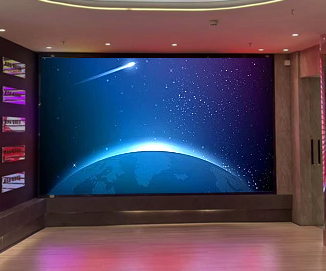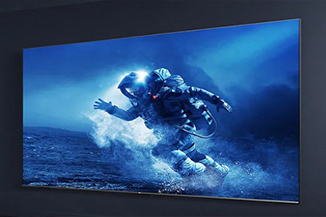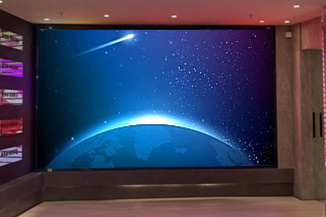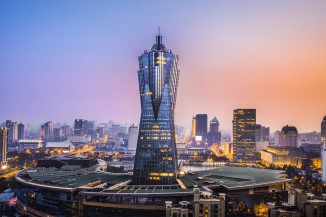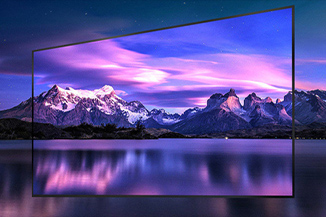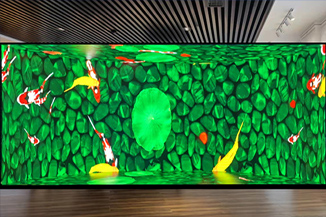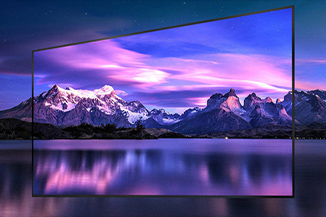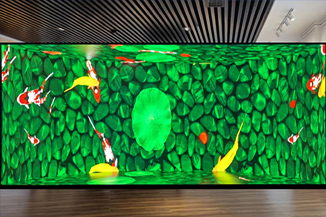Publisher: Supplier of LED Display Time: 2022-03-04 14:04 Views: 1880
In view of the diversification and differentiation of the stage beauty effects of TV variety shows, this paper summarizes the relevant application experience of using LED display screens as the elements of stage beauty in variety TV programs, and expounds the composition and related technology of LED display technology for stage beauty in general variety shows. The main points, as well as the different characteristics of the structure and system composition of the LED display screen for variety show stage beauty (commonly known as rental screen in the industry) and the traditional fixed installation LED display (commonly known as engineering screen in the industry).
1 Features of LED display for stage art
In order to meet the different requirements of stage design, the LED display screen for variety show stage beauty (commonly known as rental screen in the industry) and the traditional fixed installation LED display screen (commonly known as engineering screen in the industry) are very different in structure and system composition:
1) Multiple display cabinets are spliced into a display area that meets the requirements of stage design. At present, the common cabinet display areas are 480 mm × 480 mm, 500 mm × 500 mm and 1 000 mm × 500 mm.
2) In order to facilitate installation and disassembly, the display box needs to be light and compact; with the continuous reduction of the pixel pitch of the display, in order to ensure the display quality and splicing accuracy, the display box is required to have high enough strength. Therefore, there are display cabinet structures made of magnesium-titanium alloy or carbon fiber materials on the market.
3) In order to improve the splicing accuracy and disassembly efficiency between the boxes, there are generally quick locking devices between the boxes, and even many manufacturers provide a positioning mechanism between the boxes.
4) In order to protect the LED light-emitting unit that may be damaged by collision during frequent disassembly and assembly, the manufacturer usually installs a protective component called a mask in front of the LED light-emitting unit.
5) In order to meet high reliability requirements such as live TV, the content source signal and control signal transmission system should at least have dual redundant backup; also for high reliability requirements, some manufacturers have also designed a front maintenance structure or a quick replacement structure. .
2 Lighting unit (LED light)
The LED display screen is a display screen composed of LED matrix. Due to the good color consistency, large viewing angle and very good color mixing effect of the surface mount lights, almost 100% of the LED displays for stage art use the surface mount three-in-one process. Therefore, this article only describes the relevant characteristics of surface mount lamps, which are mainly composed of chips, brackets, leads, shells and fillers. The commonly used chip sizes in the market are 6 mil (1 mil = 0.001 in = 0.00254cm), 7 mil, 8 mil, 9 mil, 10 mil, 12 mil, 14 mil, etc. After the wafer of the same manufacturer is divided into chips of different sizes, Under the condition that the luminous brightness is required to be certain, the smaller the size, the larger the driving current required per unit chip area; on the contrary, the larger the chip size is, the smaller the driving current required per unit chip area. However, due to the change in the size of the chip, its thermal resistance also changes, so the relationship between the chip size and the required driving current is non-linear under the premise of the same luminous brightness; in order to ensure the high brightness and high consistency of the surface mount lamps , High stability, chip material selection will be a very important task. For example, one of the best domestic chip combinations is Taiwan Jingyuan's red LED + Hangzhou Shilan's blue and green LEDs.
The bracket structure is generally divided into PCB structure and iron bracket, copper bracket, copper alloy bracket, etc. The surface of the bracket has two processes of tin plating and silver plating. At present, iron bracket and copper bracket are popular in the market, and the surface is tin-plated or silver-plated. The weather resistance of different brackets is different, and high-end products in the industry use more copper brackets. The bracket should be made of imported red copper material and imported PPA material as much as possible to ensure the heat dissipation and stability of the product.
Similarly, there are various choices of lead wires such as iron, copper, alloy, gold wire, etc. The domestic Heraeus 99.99% gold wire is one of the more suitable products. Most of the fillers used in the surface mount lamps for display screens are imported Japanese products. Each chip packaging company will adjust the unique formula ratio according to the characteristics of the products, so that the surface mount lamps have better heat resistance and low light decay. and stress adaptability. The structure of the surface mount light is shown in Figure 1.
In order to improve the contrast of the display screen and reduce the reflection of the stage lights, the concept of black body light is also introduced in the packaging of the surface mount lights: the device adopts a full black body packaging design, so as to better improve the contrast of the display screen; the colloidal surface of the device adopts a matte surface The design can effectively reduce reflective interference and make the screen display softer and brighter. However, the use of black body lamps will greatly reduce the luminous brightness under the same driving current, which will increase the manufacturing cost of LED displays under the same brightness requirements. The actual surface mount light is shown in Figure 2.
In order to improve the horizontal viewing angle of the display screen and correct the horizontal left and right parallax of the display screen, the packaging manufacturers of the surface mount lamps also adopted the "one"-shaped chip arrangement process to replace the early "pin" shape arrangement.
It should be noted that the surface mount lamps used in the same display must use the same batch of lamps that have been selected by spectroscopic color separation. This is because even if the same size chips are divided from the same wafer, the same driving current is used. The wavelength of visible light emitted by it is also quite different (caused by uneven distribution of impurities in the wafer). Generally, it is required that the wavelengths of each color of the surface mount lamps used in the same display must be within a continuous ± 5 nm. It is also for the same reason that different batches of displays cannot be mixed and spliced in principle.
3 modules
The concept of LED display module is a product of mass production. In fact, it is already an LED matrix unit, and several modules constitute the display surface of the display box. It consists of a bottom case (structure), a PCB board, and a mask. The PCB board is uniformly distributed with electronic components such as LED surface mount lights, driver ICs, decoding ICs, signal and power-related connectors.
The bottom shell of the module is just a bearing structure of the PCB board from the surface, in fact, its own precision, strength and heat dissipation performance are very important to the display body. Although the bottom shells of most modules are made of engineering plastics, there are also a small number of high-end products that are directly made of aluminum alloys. The smaller physical size of the module will be beneficial to the machining accuracy and strength of the module bottom case itself, but at the same time it will also reduce the production efficiency.
The load-bearing power on the display module is relatively large, and the safety requirements are also relatively high, so the PCB material is generally selected from FR4 and 94V grade 0 boards. And because LED is a flat display product, it has high requirements on the warpage of the PCB, so a grade 1 board is generally used. The thickness of the finished product is 1.6 mm or 2.0 mm to ensure the flatness of the display module PCB. In addition, the heat distribution should be fully considered in the PCB circuit design to reduce the influence of temperature on the LED. In the circuit, the power layer and the ground layer should be evenly routed to make the heat dissipate evenly and avoid the luminous color spots of the surface mount lamps caused by heat.
In order for the product to meet the electromagnetic compatibility standard, precise design and selection are required for PCB wiring and packaging of on-board components. In the PCB system design, use filters to control conducted interference; provide reasonable decoupling capacitors to make the onboard driver IC work reliably and reduce high-frequency noise in the power supply, thereby reducing EMI. Due to the influence of wire inductance and other parasitic parameters, the response speed of the power supply and its power supply wires is slow, so that the instantaneous current required by the driver IC in the high-speed circuit is insufficient. Reasonable design of bypass or decoupling capacitors and distributed capacitance of the power supply layer can quickly supply current to the device by utilizing the energy storage effect of the capacitor before the power supply responds. Correct capacitive decoupling is the key to reducing common-mode EMI; grounding design is the key to reducing overall board EMI. Use single-point grounding, multi-point grounding or mixed grounding methods. The digital ground, analog ground and noise ground are separated, and the multi-layer board design should be adopted to ensure that there is a ground plane layer to reduce the common ground impedance.
The cheap driver IC only provides a constant current function for driving the LED (through the current limiting resistor, which can hardly be adjusted after leaving the factory), and the control of the LED brightness comes from the shutdown control signal of the receiving card (OE+DATA= PWM), and its maximum refresh rate will be limited by the maximum clock frequency available on the PCB. The driver IC with PWM adaptive pulse width modulation function, in addition to providing the function of constant current drive, its quiescent current can also be fine-tuned (that is, current gain adjustment) through the built-in register. What's more different is that the PWM signal for adjusting the LED brightness is generated inside the chip by itself, that is, as long as the brightness data is provided to it, the LED brightness can be controlled at a higher refresh rate. ICs with PWM adaptive pulse width modulation function can perfectly achieve high-quality display effects even when the circuit clock frequency is low (for example, the clock frequency is only 6MHz, and the conventional IC clock frequency is required at the same refresh rate. but requires at least 18MHz). The reduction of the PCB clock frequency has an important positive significance for EMI.
For a constant current driver IC, its inter-chip output current error and inter-pin output current error are very important considerations. Most single constant current driver ICs generally integrate the driving capability for 8 to 24 LED lamps. After comprehensively considering factors such as display brightness, PCB component bearing density, refresh frequency requirements, power consumption and even manufacturing costs, These constant current driver ICs often work together with the decoding circuit in the scanning state.
4 masks
The mask can protect both the LED light-emitting tube and the PCB circuit board, so that the product can avoid damage to the LED light and the PCB board caused by bumps during disassembly and handling; at the same time, it can also eliminate the modular visual phenomenon (by setting the surface texture) structure) to ensure that the display unit is assembled without obvious bright and dark lines; it can also play the role of outdoor UV protection (through the raised brim above).
Since the mask is located in front of the LED surface mount light, its structure will play an important role in the viewing angle of the entire display. For the same reason, it is the face of the entire display screen, and its color consistency is also very important, so many manufacturers apply an "oil spray" process to it to increase the appearance consistency of the screen, and the color of the ink is also important to the display. The contrast enhancement of the screen helps.
Although the mask is small, it is not easy to manufacture. The hardness of the material needs to be moderate, and the flatness is required to be high. In particular, the manufacturing tolerance is very difficult to control due to the shrinkage after demolding and the influence of ambient temperature.
5 HUB
The HUB is a signal redistribution board that connects the LED module and the receiving card. The simple way is to connect it to the LED display module with a PCB board and a cable. Due to the high frequency of disassembly and assembly, this connection method is often prone to poor connection. However, with the development of stage art screens, the stability of the screen signal is getting higher and higher, so some high-end products are now using PCB boards and high-speed connections. The HUB board is loosened due to vibration during disassembly and transportation, which may lead to unstable display signals.
The HUB is the bridge between the control system and the display module. Although LED control system providers generally provide HUB products, most large-scale display manufacturers design their own HUB boards. In the design of the HUB, it is also necessary to fully consider the design and stability of EMI. Adopting a highly stable connector welding process, no wire connection, all signals and power supply are transmitted through the PCB, which makes the product more concise and the process more beautiful, and at the same time avoids the conduction radiation caused by wire connection. Backup redundancy is also used in the signal connection, which enhances the stability of the product. As shown in Figure 8, each signal implements asymmetric signal redundancy.
6 Receiving card
The receiving card is a unit that connects the past and the future in the display screen. It receives the control signal and the whole screen image signal transmitted by the sending card through the signal transmission line (commonly a gigabit network cable), and selects the one to be displayed by relying on its own XY coordinate setting information. After the signal, the control signal and the whole screen image signal are transmitted to the rear display box; at the same time, the data signal filtered by itself is set by a certain program, and the display data signal and display control signal are output in sequence and by port. to the HUB board.
In addition to the above main functions, the current receiving card must also have the following functions: high grayscale high refresh and low brightness high refresh; redundant backup, data return; point-by-point chromaticity correction and point-by-point brightness correction information storage; intelligent ID setting; special-shaped light board, special-shaped box, special-shaped screen setting; can be snapped at any position; box status monitoring, temperature monitoring, signal line communication status detection; power supply voltage detection; LED light open circuit detection and other functions. In the LED industry, the receiving card belongs to the control system category, which is generally provided by the LED display screen system manufacturer. The actual receiving card products used by Jiangsu Satellite TV are shown in Figure 9.
7 Display box
By assembling the above components and the box, the display box is realized.

